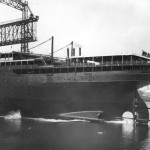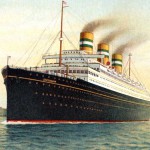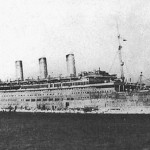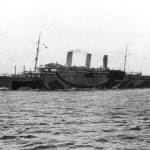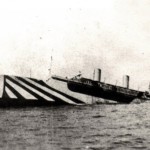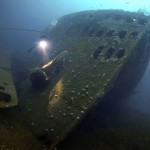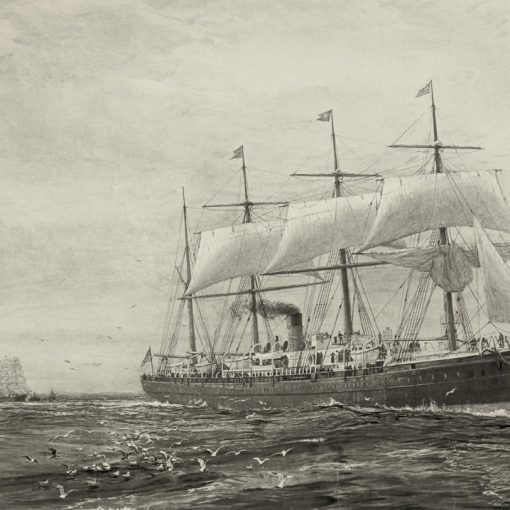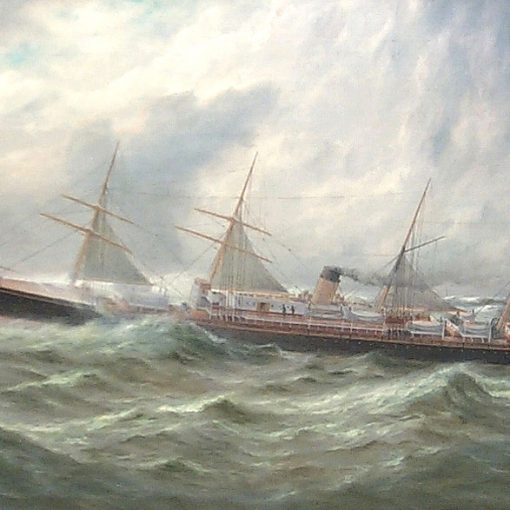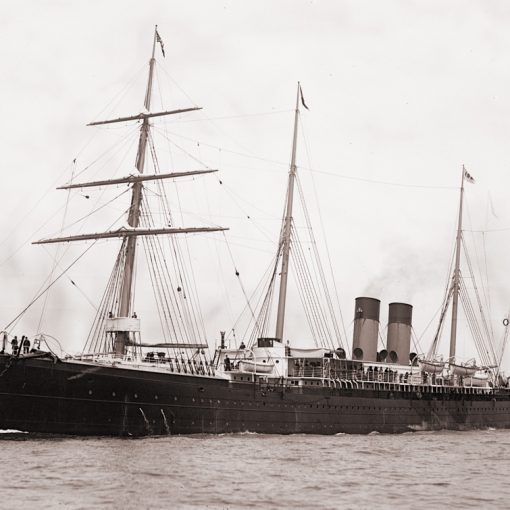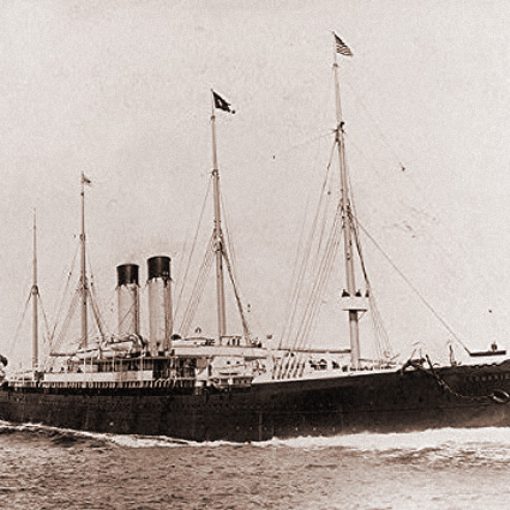1917 – 1918
Also known as Statendam (II)
The first decade of the 20th century saw the world enjoying great prosperity. Every day, it seemed, something bigger and better was invented. With the technological revolution of the 1800s in mind, people felt that virtually nothing was impossible. Shipping companies were embroiled in a prestigious contest of operating the largest and fastest ocean liners, and the design of the ocean liner had evolved swiftly during the last 25 years or so.
The Holland-Amerika Line also wanted great ships to symbolise their company, and of course also their nation. And so, they approached the famous shipbuilders of Harland & Wolff in Belfast with an order for a new 30,000-ton liner. In 1912, the keel of the new ship was laid down.
Two years later, on July 9th 1914, the new ship was launched and named Statendam. Work began on fitting her out, and the Holland-Amerika Line looked forward to entering their new ship on the North Atlantic run. But, history would have it differently. On June 28th 1914, Serb nationalist Gavrilo Princip assassinated the Austrian-Hungarian crown prince in Sarajevo. Just about a month later, war was declared. The First World War was a fact.
With the declaration of war, the world changed completely. The commercial interests of the shipping companies could no longer continue to the same extent and in September, Holland-Amerika was forced to stop the construction of the Statendam. She lay idle into the following year, when she was eyed by the British for wartime use.
In 1915, the still unfinished Statendam was requisitioned and purchased by the British government. The Empire needed vessels for trooping duties, and the Statendam’s size made her very fit for the task. Harland & Wolff were now able to continue work on the ship, but not at a very high pace. Material and labour shortages slowed things down. To save sheet metal, it was decided to make the ship’s funnels smaller in diameter that first designed. This would result in a slightly queer appearance.
On April 7th 1917, the ship was finished and had been fitted as a troopship capable of carrying 4,000 troops. She had also been given a new name – Justicia. With the sinking of the Lusitania in 1915, the British government intended the Justicia as a replacement for the lost Cunarder. She was to be managed by Cunard during the war, hence the ‘-ia’ name Justicia – Latin for ‘Justice’, and then handed over to them after the war had been won.
However, by the time of the ship’s completion, Cunard was unable to muster a crew for her. The Admiralty wanted the Justicia in wartime service as soon as possible and they could not wait for Cunard to solve the problem. Instead, the ship was offered to the White Star Line for wartime management. White Star had the recently sunken Britannic’s crew available, and thus the Justicia was allocated to them.
In 1918, the Justicia’s grey hull was repainted in a confusing dazzle paint pattern for U-boat protection, and she continued serving the Empire as a troopship. Sadly though, her end was not far away. On July 19th, Justicia was en route from Belfast to New York. When she was 23 miles south of Skerryvore, Scotland, she was torpedoed by the U-boat UB-64. Justicia took on a list, but her compartmentation prevented her from going down. To save the ship, destroyers were brought in to escort her to safe waters.
Despite the escort, the UB-64 was able to get a clear shot once more. Two torpedoes were slammed into the Justicia’s side. But still, the ship refused to sink. But, most of the crew was evacuated, leaving only a small number of hands on the ship. Unable to use her engines now, the Justicia was taken in tow by the tug HMS Sonia for Lough Swilley were the waters were shallow enough to ground her safely. However, the enemy U-boat was still stalking its prey and a few hours later she fired a fourth torpedo towards the wounded Justicia. The torpedo hit, but the UB-64 had now been damaged and escaped the scene. The Justicia still remained afloat.
The attempt of rescuing the Justicia continued, but the UB-64 had reported the ship’s position. The following day, the Justicia was caught up by the U-boat UB-124. At 9 a.m. that morning, the UB-124 fired two torpedoes into the Justicia’s side. Already severely damaged, the Justicia could not survive these last two hits. By noon she had rolled over onto her side and she sank beneath the waves shortly thereafter, with 16 men from the engine room lost.
The UB-124 was attacked with depth charges, and was later sunk by the destroyers Marne, Milbrook and Pigeon. All but two of the U-boat’s crew was taken as prisoners of war. Following the incident, the Navy made a thorough investigation. The fact that the Justicia had been torpedoed six times in broad daylight brought suspicion of neglect from her officers and crew. However, there had been no neglect, and it was subsequently stated that the sinking was the result of the incredible bravery and determination of the U-boat’s crews.
After only about a year of service and having never carried a single paying passenger, the Justicia was gone. She was yet another loss in the terrible carnage known as World War I. Today, the Justicia remains where she once went down, 28 miles north-west off Malin Head. The wreck, which lies in waters 68 metres deep, is in quite good condition and is sometimes visited by sport divers.
Specifications
- 776 feet (237 m) long
- 86 feet (26.3 m) wide
- 32,234 gross tons
- Steam triple expansion engines turning two wing-propellers, plus an exhaust-steam turbine turning the centre propeller
- 18 knot service speed
- Intended passenger capacity of 3,430 people; completed with a troop capacity of approximately 4,000

